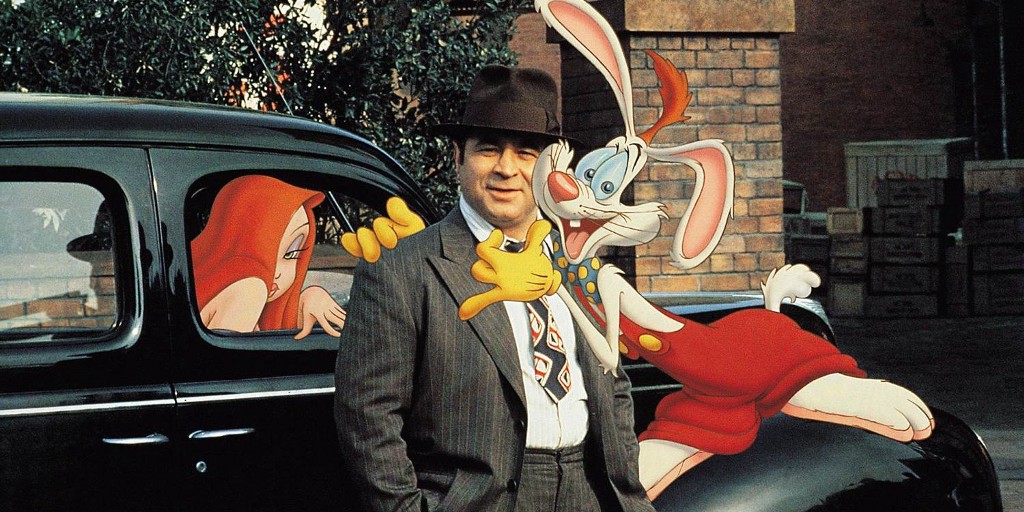As the major studios tinker with photorealistic character designs, can Hollywood find the future of animation in its past?

This weekend, families with hit their local multiplex to relive the wonder of Beauty and the Beast in its new live-action format. And whether the film is a runaway hit or only a modest success, Disney shows no signs of plugging its pipeline of live-action remakes. According to this 2016 Time piece, Disney is currently working on no fewer than twelve (that’s one-two) remakes of their popular animated films, meaning twelve more movies featuring up-and-coming actresses, revamped musical numbers, and CGI creatures that take a deep, deep dive into the uncanny valley.
While this brand new surge of Disney movies are likely to each be a technical wonder, for my money, there’s something oddly pedestrian about converting the beautiful Disney animated character designs into a series of photorealistic CGI models. While the animation work is stellar, these films’ modern digital effects seem more of their era than achieving a timeless aesthetic that will usher in a new phase of Disney classics. With Hollywood now awash in fully CGI characters, it is only a matter of time before some studio begins to experiment not with the realism of its characters but its more cartoon-ish qualities. Hopefully, that will mean a return to the more conventional live-action animated movies of yesteryear.
Live-action animated movies – or animated live-action movies – were rarely more than a curiosity, but there is an interesting history of blended movies in Hollywood. Once upon a time, Gene Kelly danced with Jerry Mouse, Mary Poppins and Bert soft-shoed their way through a barn house choir, and Angela Lansbury rocked out at the bottom of the beautiful briny sea. Perhaps the most successful of these films, however, was 1988’s Who Framed Roger Rabbit, the predecessor to The LEGO Movie both in terms of creative animation and legal finesse. In a display that seems shockingly implausible today, Warner Brothers and Disney characters intermingled with shocking abandon; a 1988 issue of The Monthly Film Bulletin referred to the film as a “technical and logistical landmark,” as much for the film’s “devotion to animation/cartoon trivia” as its technical achievements. The film was a smash hit worldwide, breaking $300 million at the global box office and inspiring awkward imitators like the 1992 flop Cool World.
But while the technology that allows animated characters to appear onscreen has progressed by leaps and bounds, this style of film has a less than stellar track record at the box office. Using Bob Chipman’s live-action/animation hybrids list as a reference point, we can clearly see that the films released since 1996’s Space Jam have failed to earn back their initial investment, let alone set the international box office on fire. The Adventures of Rocky & Bullwinkle grossed a little more than $35 million worldwide against a $75 million budget; Monkeybone cost $75 million to make and only pulled in $7.6 million worldwide; Osmosis Jones earned $14 million despite a $70 million budget; Looney Tunes: Back in Action, the big winner of the group, pulled in $68.5 million against an $80 million production cost. Perhaps the closest Chipman comes to identifying a successful hybrid film is George Miller’s 2006 film Happy Feet, which is still primarily a film with photorealistic animation (or, at least, as photorealistic as animation got back in 2006).
If It Ain’t Broke: Visual Comparisons Between Beauty and the Beast, Animated and Live-Action
Sure, some modern movies do attempt a more cartoonish visual style, often to incredibly mixed results. Films like Monster Hunt or Monster Trucks – or any movie with CGI creatures that has “monster” in the title, really – are less viable summer films and more foreign curiosities or offseason gambles. Animation prefers photorealism; movies like Kong: Skull Island and Rise of the Planet of the Apes are treated as the next phase in cinematic evolution or as an evolving artform in-and-of-ithemselves. Andy Serkis, who played Gollum in the Lord of the Rings trilogy and Caesar in the Planet of the Apes films, is hailed as a pioneer of what Rolling Stone magazine refers to as “post-human acting.” Andy Kebbler, who pulled double duty in Kong: Skull Island and starred in last year’s big screen Warcraft adaptation, has also described motion capture as getting to the “essence of the performance” of an actor.
And that seems like a shame, because modern technology has opened the door to any number of animation styles. Robert Zemeckis’s dalliances with rotoscoping (The Polar Express, Beowulf, A Christmas Carol) have offered one such answer for stylized animation; Richard Linklater’s experiments with cell-shaded animation (Waking Life, A Scanner Darkly) offer quite another. As Disney pushes the boundaries of photorealistic CGI, artists like Don Hertzfeldt have found poignancy in seemingly rudimentary animation styles, suggesting that storytelling – not perfectly rendered three-dimensional images – are still what drives the animation world forward. Filmmakers don’t need to ape the classic animation style of Hanna-Barbera or Warner Brother cartoons to bring a live-action movie to life; they need only find the right aesthetic that blends together the real world with the animated reality that exists in their head.
The competitive advantage of any studio comes in their ability to differentiate their product from that of their competitors. Once every studio has access to the same photorealistic 3D modeling – once Sher Kahn in Jungle Book and Caeser in the Planet of the Apes films are virtually indistinguishable from their real-life counterparts – some adventurous studio will choose to push the boundaries of animation in another direction and offer us a hybrid live-action film that aims not for realism, but for a surrealistic dream logic. With another Space Jam film already scheduled for 2019, a return to glory for the live-action animated movie could be in the cards. Here’s hoping that Hollywood learns its lesson before we get stuck in an uncanny valley we can’t climb out of.
Related Topics: Animation, Disney

